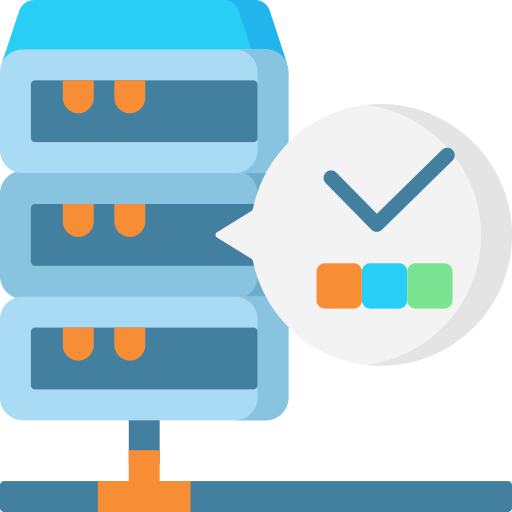Forensic Accounting & Fraud Prevention
Introduction
 engage a Forensic Auditor?
Engaging an external party other than internal auditor & management team can have distinct advantages from conducting an internal investigation.
engage a Forensic Auditor?
Engaging an external party other than internal auditor & management team can have distinct advantages from conducting an internal investigation.
 Forensic Accounting Concepts
Fraud Triangle
The fraud triangle developed by Donald Cressey, is a model for explaining the factors that cause someone to commit occupational fraud. It consists of 3 components which, together, lead to fraudulent behavior:
Forensic Accounting Concepts
Fraud Triangle
The fraud triangle developed by Donald Cressey, is a model for explaining the factors that cause someone to commit occupational fraud. It consists of 3 components which, together, lead to fraudulent behavior:
 Forensic Audit Process
Broad stages of Forensic Audit:
Forensic Audit Process
Broad stages of Forensic Audit:
 Forensic Audit tools & Techniques
The seven recognized Investigative Tools and Techniques used by Forensic Specialist/ Fraud Examiners
Forensic Audit tools & Techniques
The seven recognized Investigative Tools and Techniques used by Forensic Specialist/ Fraud Examiners

- Fraud is intentional deception made for personal gain or to damage another individual. Defrauding people or entities of money or valuables is a common purpose of fraud.
- The term ‘forensic ‘has usually attracted an unfortunate connotation with the morbid world of forensic medicine. Forensic accounting shares only one thread common with forensic pathology. That common denominator is the pursuit of evidence that will stand the rigorous scrutiny that the rules of evidence and procedure demand for its admission as evidence before the courts.
- Forensic Audit can be broadly classified into two categories:-
- Encompassing litigation support &
- Investigative accounting.
- Other support services that traditionally come within the sphere of investigative services revolve – including corporate intelligence and fraud investigation services.
Use of Forensic Auditing:
The services rendered by the forensic auditors are in great demand in the following areas:- Fraud detection where employees commit Fraud
- Criminal Investigation: Matters relating to financial implications the services of the forensic accountants are availed of.
- Cases relating to professional negligence
- Arbitration Service
- Settlement of Insurance Claims
- Dispute Settlements
 engage a Forensic Auditor?
Engaging an external party other than internal auditor & management team can have distinct advantages from conducting an internal investigation.
engage a Forensic Auditor?
Engaging an external party other than internal auditor & management team can have distinct advantages from conducting an internal investigation.
- Objectivity & Credibility: An external party would be far more independent and objective than an internal auditor or company accountant as well as an established firm of forensic accountants would also have credibility stemming from the firm’s reputation, network and track record.
- Accounting expertise and industry knowledge
- Provision of valuable manpower resources
 Forensic Accounting Concepts
Fraud Triangle
The fraud triangle developed by Donald Cressey, is a model for explaining the factors that cause someone to commit occupational fraud. It consists of 3 components which, together, lead to fraudulent behavior:
Forensic Accounting Concepts
Fraud Triangle
The fraud triangle developed by Donald Cressey, is a model for explaining the factors that cause someone to commit occupational fraud. It consists of 3 components which, together, lead to fraudulent behavior:
- Perceived pressure
- Perceived opportunity
- Rationalization
- Financial stability is threatened by economic, industry, or entity operating conditions.
- Excessive pressure exists for management to meet debt requirements
- Personal net worth is materially threatened
- A history of violations of laws is known
- Little communication and support of the entity’s core values is evident.
- Management has a practice of making overly aggressive or unrealistic forecasts.
- Personal financial obligations create pressure to misappropriate assets.
- Adverse relationship between management and employees motivate employees to misappropriate assets.
- Disregard for the need to monitor or reduce risk of misappropriating assets exists.
- There is a disregard for internal controls.
- There is presence of large amounts of cash on hand or inventory items.
- There is an inadequate internal control over assets.
- Fraudulent Statements
- Corruption
- Asset Misappropriation
- Frauds that are done quickly and easily within the company
- Are internal in nature, which means that they are perpetuated by employees
- Include things like check fraud , revenue skimming , and false invoicing
 Forensic Audit Process
Broad stages of Forensic Audit:
Forensic Audit Process
Broad stages of Forensic Audit:
- Accepting the investigation:
- Forensic Auditors must ensure whether their firm has necessary skills and experience to accept the work.
- Ideally statutory Auditors should not accept forensic auditing assignments of the same concern.
- Planning or Objectives of the investigation:
- Identity type of fraud & Fraudsters
- Quantify the loss
- Gather Evidence
- Provide advice to prevent the reoccurrence
- Gathering Evidence or Technique :
- Testing internal controls
- Use analytical procedures
- Apply CAAT
- Discussion and interviews with employees
- Substantive techniques such as Reconciliation, Cash counts and Review of stocks.
- Reporting: Report contains-
- Findings/ observation
- Summary of evidences
- Amount of loss
- How fraudsters set up fraud scheme and which controls were circumvented
- Recommend improvements of control
- Court Proceedings:
- Members of investigation team are involved
- Evidence gathering is presented
- Simplify technical teams
 Forensic Audit tools & Techniques
The seven recognized Investigative Tools and Techniques used by Forensic Specialist/ Fraud Examiners
Forensic Audit tools & Techniques
The seven recognized Investigative Tools and Techniques used by Forensic Specialist/ Fraud Examiners
- Public Document Reviews and Background investigations – Public Databases, MCA Website, Corporate Records, internet etc.
- Interviews of Knowledgeable Persons
- Confidential Sources- Hotlines, E-mail, Letters, Current & Former Vendor, Customers & Employees.
- Laboratory analysis of Physical and Electronic Evidence- physical examination, fingerprint analysis, forgeries, ink sampling , document dating, Computer Forensics
- Hard disk Imaging
- E-mail analysis
- Search for erased files
- Analyze use & possible misuse
- Computer software to analyze data
- Physical and Electronic Surveillance
- Undercover operations
- Analysis of Financial Transactions

- General Audit Techniques
- Testing Defenses
- Statistical & Mathematical Techniques
- Trend Analysis
- Ratio Analysis
- Technology Based / Digital Forensics Techniques:
- Cross- drive analysis
- Live analysis
- Deleted files
- Stochastic forensics
- Steganography
- EnCase
- MD5
- Tracking Log Files
- PC System Log
- Free Log Tools
- Computer Assisted Auditing Techniques (CAATs) / Computer Assisted Audit Techniques & Tools(CAATT)
- Testing details of transactions and balances
- Identifying inconsistencies or significant fluctuations
- Testing general as well as application control of computer systems
- Sampling programs to extract data for audit testing, and
- Redoing calculations performed by accounting systems.
- Generalized Audit Software’s (GAS) or
- Common Software Tools (CST)
- Check Missings
- Check Duplicates
- Round numbers
- Repetitive Odd-Numbers
- Classification
- Stratification
- Single Transactions
- Isolated Outliers
- Data Mining Techniques
- Classification- Arranges the data into predefined groups with the help of algorithms.
- Clustering- Is like classification but the groups are not predefined, so the algorithm will try to group similar items together
- Regression- Attempts to find a function which models the data with the least error. A common method is to use Genetic programming

 Hardware & Software &Application Audit:
Every system requires varied combinations of hardware and software configuration. Software could be customized or could be off the shelf. Care should be taken to verify the inputs, processing and the output controls governing the applications in addition to its security, network and infrastructure.
Security Audit
Hardware & Software &Application Audit:
Every system requires varied combinations of hardware and software configuration. Software could be customized or could be off the shelf. Care should be taken to verify the inputs, processing and the output controls governing the applications in addition to its security, network and infrastructure.
Security Audit

 Why is SCM strategy important for an Organization?
Why is SCM strategy important for an Organization?

 2.Types of Business Analytics
Descriptive Analytics answers the questions: What has happened in my business? Why has it happened? What do I know about my customers, competitors, suppliers, etc.? Examples of this are Business Intelligence, Reporting etc.
Predictive Analytics answers the questions: What is likely to happen? What is likely to be true about my customers, competitors, suppliers, etc.? Examples of this are forecasting, regressions, data mining etc.
Prescriptive Analytics answers the questions: What should I do? What is the best course of action given what I know and what I think will happen? Examples of this are optimization, mathematical programming, heuristic algorithms etc.
2.Types of Business Analytics
Descriptive Analytics answers the questions: What has happened in my business? Why has it happened? What do I know about my customers, competitors, suppliers, etc.? Examples of this are Business Intelligence, Reporting etc.
Predictive Analytics answers the questions: What is likely to happen? What is likely to be true about my customers, competitors, suppliers, etc.? Examples of this are forecasting, regressions, data mining etc.
Prescriptive Analytics answers the questions: What should I do? What is the best course of action given what I know and what I think will happen? Examples of this are optimization, mathematical programming, heuristic algorithms etc.
 3.Basic Domains Within Analytics
3.Basic Domains Within Analytics
 Benefits of Business Analytics
Benefits of Business Analytics
 Popular Tools for Business Analytics
Popular Tools for Business Analytics
 “Analytics and Big data” is increasingly becoming a key skill-set in manager’s arsenal. CEOs and business leaders want to understand what they can do with data, organizations want to know how they can train and recruit people with relevant analytical skill-sets.
Analytics is not just about generating insights and getting those to the right people. To sustain the long-term success of data-driven innovation, it is necessary to continually revise one’s analytical approach in order to generate insights that lead to new innovation and competitive advantage.
“Analytics and Big data” is increasingly becoming a key skill-set in manager’s arsenal. CEOs and business leaders want to understand what they can do with data, organizations want to know how they can train and recruit people with relevant analytical skill-sets.
Analytics is not just about generating insights and getting those to the right people. To sustain the long-term success of data-driven innovation, it is necessary to continually revise one’s analytical approach in order to generate insights that lead to new innovation and competitive advantage.
